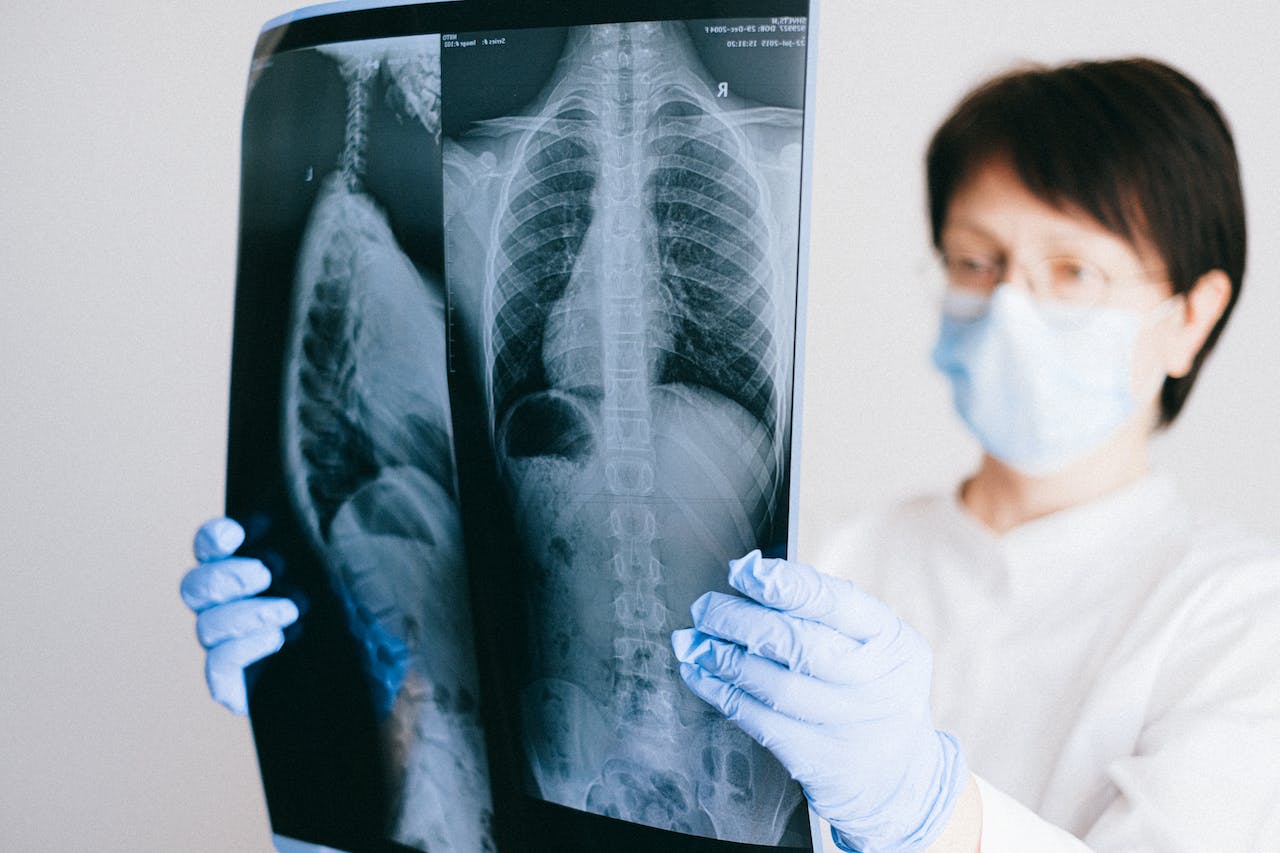How Common is Skin Cancer?
Skin cancer is one of the most common types of cancer, and its prevalence is on the rise worldwide. It is the most common type of cancer in the UK, with more than 16,000 cases being diagnosed every year. This statistic includes both melanoma and non-melanoma skin cancer types, and it is important to remember that not all types are malignant.
Excessive sun exposure, especially in sun-exposed areas, is a major risk factor for developing both melanoma and non-melanoma skin cancer. This includes tanning beds and prolonged exposure to ultraviolet (UV) radiation from the sun. Other risk factors include a family history of skin cancer, a history of sunburns, a weakened immune system (such as in organ transplant recipients), and a personal history of actinic keratosis (a precancerous skin condition).
In the next section, we will delve deeper into the various risk factors associated with skin cancer and how they contribute to the development of this common cancer.
What Are the Risk Factors For Skin Cancer?
Certain factors can increase an individual’s risk of skin cancer. Understanding these risk factors can help individuals take preventive measures and seek early detection and treatment.
- Sun exposure: One of the primary risk factors for skin cancer is exposure to sunlight. Spending long hours in the sun, especially without proper protection like sunscreen and protective clothing, increases a person’s risk of skin cancer.
- Tanning bed use: Frequent use of tanning beds, which emit harmful UV radiation, can also contribute to increasing the risk of skin cancer.
- Immunosuppressive medications: Medications which suppress the immune system, such as those prescribed after organ transplantation, can make individuals more susceptible to skin cancer.
- Radiotherapy (medical radiation exposure used in the treatment of cancer): Prior radiation therapy, especially to the head and neck area, can increase the risk of all types of skin cancer.
- Skin type: Light-coloured eyes, fair skin, a history of sunburns, and having many moles are additional risk factors to consider.
- A family history of skin cancer
It’s important for individuals, especially those with risk factors, to be proactive in protecting their skin. Regularly using sunscreen, avoiding excessive sun exposure, and getting yearly skin cancer screenings can help detect any potential issues early on.

Symptoms of Skin Cancer
Symptoms of skin cancer can vary depending on the type and stage of the cancer. It is important to be aware of the common signs and symptoms of skin cancer, as early detection can greatly improve the chances of successful treatment.
The most common symptom of skin cancer is the development of new spots on the skin or changes in the size, shape, or colour of existing spots. This includes moles, freckles, or other skin growths. It is important to pay attention to any new spots or changes in existing spots, as they can be a sign of skin cancer. These signs can be more difficult to spot on darker skin tones as opposed to those with pale skin.
Other symptoms of skin cancer may include:
- Itchiness: Some skin cancers can cause itchiness or a persistent itching sensation.
- Pain: In some cases, skin cancer may cause pain or tenderness in the affected area.
- Non-healing sores: Skin cancers may lead to the formation of non-healing sores that may bleed or ooze.
- Red or skin-coloured shiny bumps: Certain types of skin cancer may appear as red or skin-coloured shiny bumps on the skin.
- Rough or scaly spots: Skin cancers can also present as rough or scaly patches on the skin.
- Growths with raised borders: Some skin cancers may have raised borders or may feel like a lump under the skin.
If you notice any of these symptoms or any other changes in your skin, it is important to see a healthcare professional for further evaluation. They may perform a skin examination or recommend a biopsy to determine if the changes are due to skin cancer. Early detection and prompt treatment can greatly improve the prognosis for skin cancer patients.
Actinic Keratosis Signs and Symptoms
Actinic keratosis is a precancerous skin condition that can develop due to long-term sun exposure. This means that it is not cancer but over time could develop to become cancerous. It appears as scaly or rough spots on the skin, usually on areas that have been exposed to a lot of sun over the years, such as the face, scalp, lips, ears, and backs of the hands. The spots may be grey, tan, pink, red or a combination of these colours, and are often slightly raised.
In some cases, actinic keratosis may cause itching or burning. There may also be an associated feeling of tenderness or pain. Actinic keratosis can progress to skin cancer if left untreated, so it is important to have any suspicious spots evaluated by a healthcare professional.
What Is the Treatment For Actinic Keratosis?
In most cases, treatment involves removing the affected skin cells or using topical medications to reduce the risk of developing cancer. Common treatments include cryotherapy (freezing), laser therapy, and topical creams such as 5-fluorouracil (5-FU). In some cases, a combination of treatments may be more effective than a single method.

Basal Cell Carcinoma Signs and Symptoms
Basal cell carcinoma is another type of non-melanoma skin cancer that commonly occurs in sun-exposed areas of the body. It is a common skin cancer often seen in the elderly. It tends to develop slowly over time and is usually not life-threatening. However, early detection and treatment are important to prevent further complications and damage.
The signs and symptoms of basal cell carcinoma can vary, but some common indicators include:
- Pearly or waxy bump: Basal cell carcinomas often appear as a small, translucent, or flesh-coloured bump on the skin. They may have a pearly or waxy texture.
- Scar-like lesion: Some basal cell carcinomas can resemble a scar or a flat, pale area of skin that may be slightly depressed.
- Bleeding or scabbing sore: Skin cancers may develop as an open sore that doesn’t heal or heals and then returns. These sores may bleed, crust, or scab over repeatedly.
- Pink growths with raised edges: Basal cell carcinomas may manifest as pink or red growths that have raised edges and a lower centre. They might resemble a pearl trapped under the skin.
- Small shiny bumps with black or brown areas: Certain basal cell carcinomas can present as small, translucent, shiny bumps that contain black, brown, blue, or clear areas.
- Raised red patches that itch: Rarer forms of basal cell carcinoma may appear as raised, itchy, red patches on the skin.
- Flat areas resembling scars: Basal cell carcinomas can also resemble flat areas resembling scars, which may be white, yellow, or waxy.
What Is the Treatment For Basal Cell Carcinoma?
The treatment for basal cell carcinoma typically depends on the size, type, and location of the tumour. Surgery is recommended for most basal cell carcinomas and can involve removing the entire tumour or just a portion of it.
Other treatments may include cryosurgery (freezing the tumour), topical medications such as imiquimod or fluorouracil, or in some rarer cases radiation therapy.

Squamous Cell Carcinoma Signs and Symptoms
Squamous cell skin cancer is another type of non-melanoma skin cancer. One of the most typical indicators of squamous cell carcinoma is the appearance of a firm pink lump on the skin. This lump may have a rough or crusted surface and can gradually develop into an ulcer. Additionally, the following warning signs may also be present:
- Rough and red scaly patch: Squamous cell carcinoma can manifest as a rough, scaly patch on the skin that may bleed or become elevated.
- Open sore with raised borders: Another warning sign is the presence of an open sore with raised borders that does not heal or keeps returning.
- Dome-shaped growth: Squamous cell carcinoma may present as a dome-shaped growth on the skin, which can be tender to touch.
It is important to note that individuals who have had organ transplants are at an increased risk of developing squamous cell carcinoma. This is primarily due to the use of immunosuppressive drugs to prevent organ rejection, which can make the skin more susceptible to cancerous growths.
If you notice any of these signs or symptoms, it is crucial to seek medical attention promptly. Regular skin checks and screenings can help in the early detection and treatment of squamous cell carcinoma.
What Is the Treatment For Squamous Cell Skin Cancer?
The treatment for squamous cell skin cancer depends on the stage and size of the tumour. Surgery is the most common form of treatment, but other forms of therapy may also be necessary. Depending on the case, it may involve a combination of therapies such as chemotherapy, radiation therapy, or immunotherapy. In some cases, medications may be prescribed to reduce the risk of recurrence or spread.
Melanoma Signs and Symptoms
Melanoma is a type of skin cancer that develops in the pigment-producing cells known as melanocytes. It is considered the most dangerous form of skin cancer, as it can spread to other parts of the body if not detected and treated early.
Melanoma usually develops on areas of the skin that have been exposed to the sun, but it can also occur in areas that are not typically exposed, such as the palms of the hands, soles of the feet, or under the nails. Identifying the signs and symptoms of melanoma is crucial to catching it in its early stages. Common signs include the appearance of a new mole or a change in an existing mole. Warning signs can include:
- Asymmetry: One half of the mole doesn’t match the other
- Irregular borders
- Variegated or uneven colour
- A diameter larger than 1cm
- Any change in size, shape, or colour of existing skin lesions
It’s also important to be aware of any unusual symptoms like itching, bleeding, or crusting, and to pay attention to any moles or growths that are painful or tender to the touch. These can also be signs of skin cancer. Regular skin cancer screenings and early detection can greatly increase the chances of successful treatment and recovery.
What Is the Treatment For Melanoma?
The treatment for melanoma depends on the stage and location of the tumour. For early-stage melanoma, surgery is usually recommended to remove the entire tumour along with a margin of healthy tissue around it.
Depending on the size and depth of the tumour, a specialist may also perform lymph node dissection to remove nearby lymph nodes that may contain cancer cells. In some cases, radiation therapy or chemotherapy may also be used to destroy remaining cancer cells or prevent the spread of melanoma.
In advanced stages, immunotherapy and targeted therapies may be used to reduce symptoms and slow down tumour growth. It is important to speak with a doctor about the best treatment options for your particular situation.

When Is Melanoma Classed As Malignant?
Melanoma is classified as malignant when the cancerous cells have spread beyond the original site and into other parts of the body, such as to a nearby lymph node or more distant organs. This is known as metastasis and can be a serious health threat.
Symptoms of melanoma at this stage may include fatigue, weight loss, shortness of breath, or swollen lymph nodes. If melanoma has become malignant, this will affect the treatment options available.
When Is a Mole a Problem?
Moles are common skin growths that usually appear during childhood or adolescence. Most moles are harmless and pose no health risks. However, some moles may develop into skin cancer, specifically melanoma, which is the most serious form of skin cancer. It is important to monitor moles for any changes or signs of abnormalities.
Normal moles have certain characteristics such as being symmetrical, having smooth borders, and being one colour throughout.
Dysplastic Nevi (Atypical Moles)
Dysplastic nevi, also known as atypical moles, are skin growths that differ in appearance from normal moles. These moles are larger in size, typically measuring more than 6 millimetres in diameter, and may have irregular shapes. Unlike normal moles that are usually symmetrical, dysplastic nevi may have asymmetrical or poorly defined borders. Dysplastic nevi are not cancers, but should be monitored to ensure that they do not become cancerous.
One key characteristic of atypical moles is their mixed colours. Rather than being one solid colour, these moles can have different shades of brown, pink, or even black within them. The variation in colour can often make them stand out from surrounding skin.
While most atypical moles are benign, it is important to monitor them closely as they have the potential to develop into melanoma. Changes in these moles, such as notched or fading borders, flat or raised surfaces, or the presence of multiple colours, may indicate the development of melanoma.
Regular self-examination of moles, including atypical moles, is crucial in detecting any changes early on. If any concerning changes are noticed, it is advisable to seek medical attention promptly. Additionally, individuals with a higher number of atypical moles or a family history of melanoma may require more frequent screenings by a dermatologist.
By being vigilant and monitoring for any changes in atypical moles, we can ensure early detection and prompt treatment, reducing the risks associated with melanoma.

Skin Cancer Signs To Watch For
In summary, it is crucial to be aware of the signs and symptoms of skin cancer in order to detect it early and seek appropriate treatment. Here are some key signs to watch for:
1. New or unusual spot: Pay attention to any new or unusual spots on your skin that do not go away within a few weeks. These may appear as small, raised bumps, rough patches, or flat areas.
2. Oozing or bleeding spot: Any spot on the skin that starts to ooze, bleed, or does not heal should be closely monitored. This could be a possible sign of skin cancer.
3. Scaly or crusty spot: Another important sign to watch for is a spot that becomes scaly, crusty, or develops a rough texture. It may feel itchy or tender to touch.
4. Mole with redness or swelling: If you have a mole that exhibits redness or swelling beyond its borders, it is advisable to have it examined. Any changes in the appearance of an existing mole should be carefully monitored.
5. Mole that grows or changes shape or colour: Monitor any moles that exhibit growth, change shape, or undergo a change in colour. Look out for asymmetrical or irregular borders, a mole rapidly growing in size, or a mole that becomes darker or exhibits multiple colours.
It is important to note that these signs do not necessarily guarantee a diagnosis of skin cancer, but they serve as important indicators.
When to See a Doctor
When it comes to your skin, it is crucial to pay attention to any abnormalities or changes that may occur. Early detection and prompt treatment of skin cancer can greatly improve outcomes and increase the chances of successful treatment.
If you notice any unusual or suspicious spots on your skin that do not go away after a few weeks, it is essential to seek medical attention.


